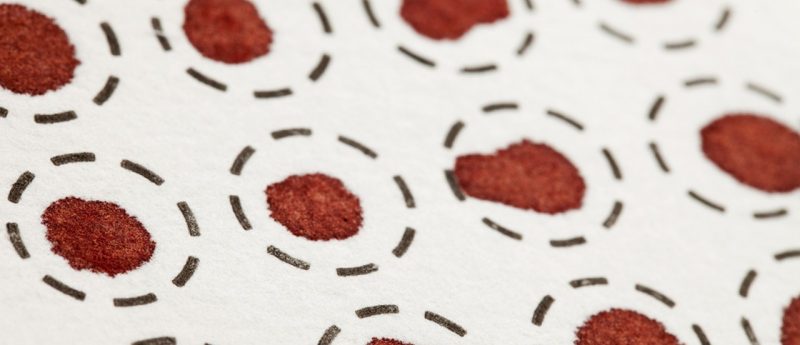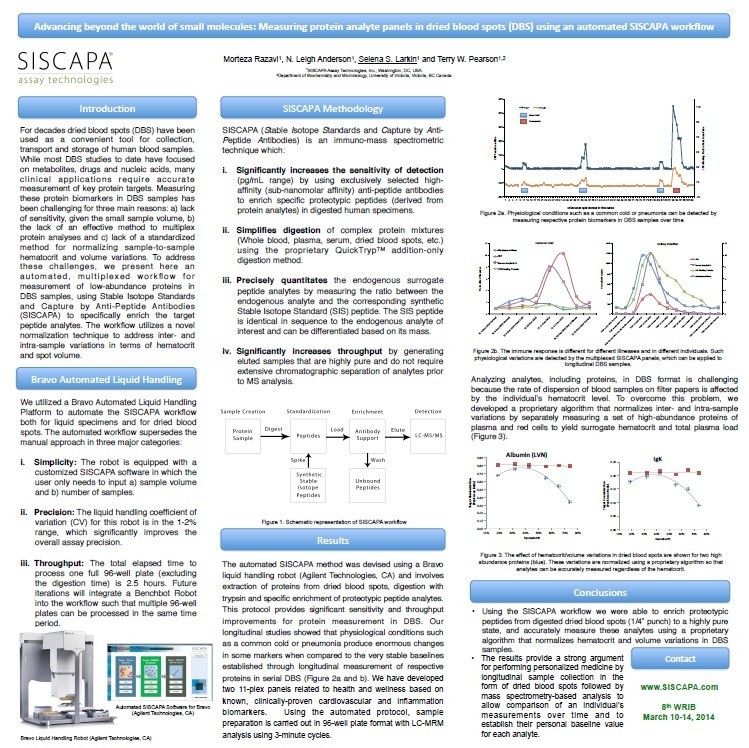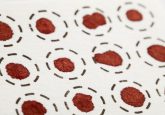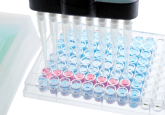8th WRIB poster award winner interview with Morteza Razavi

The 8th Workshop on Recent Innovations in Bioanalysis (WRIB) drew close to 500 professionals representing large pharmas, biotechs, CROs and multiple regulatory agencies from around the world, working on both small and large molecule bioanalysis. This year, Bioanalysis was proud to support the first WRIB Poster Award. Posters were judged by an expert panel at the conference and prizes were awarded for the best poster in the fields of ligand-binding assays and LC-MS. Here we present one of the winning posters, along with a short interview with Morteza Razavi (SISCAPA Assay Technologies).
Click the image below, or click here to view the winning poster: ‘Advancing beyond the world of small molecules: Measuring protein analyte panels in dried blood spots (DBS) using an automated SISCAPA workflow’.
Interview with Morteza “Morty” Razavi (SISCAPA Assay Technologies)
Dr. Razavi obtained his B.Sc. in microbiology and his Ph.D. in Biochemistry with a focus on clinical proteomics from the University of Victoria. During his studies he developed a method for selecting high-affinity anti-peptide antibodies suitable for SISCAPA applications. This method is currently part of the proprietary screening process by which SAT-certified antibodies are selected. Morty has pioneered the use of MALDI-TOF instruments for SISCAPA applications, an endeavor that he believes opens endless horizons for the use of mass spectrometers in clinical settings. We interviewed Morty about the research behind the poster.
What is your role at SISCAPA?
I am the Director of Lab Operations at SISCAPA Assay Technologies (SAT). My responsibilities include directing our various scientific collaborations, and the design and implementation of product development projects.
We focus on multiplexed, targeted quantitation of proteins across a range of applications including validation of putative biomarkers and bioanalysis of therapeutic proteins and antibodies. I develop SISCAPA-mass spectrometry assays to augment ligand-binding assays (LBA) in instances where protein interferences, such as soluble target or anti-drug antibodies (ADA) confound the results.
I became involved with SISCAPA through my PhD studies where I developed a method for selecting the high-affinity anti-peptide antibodies that are now used as enrichment reagents for SISCAPA applications. In order to deliver high-precision, stringent assays, we apply strict selection criteria to both the selection of proteotypic peptides and also to the screening of viable antibody reagents.
How does it feel to win the 8th WRIB Poster Prize?
We feel very privileged to have been selected as the winner of the poster prize for recent innovation in bioanalysis and we are delighted to have been recognized by such a prestigious gathering of authorities in the field. It is very rewarding to be appreciated for our attention to the need for access to high-stringency reagents and protocols for precise and accurate measurement of therapeutic proteins and other biologics.
Tell us more about the work behind your winning poster.
This work was a bit of a departure from mainstream protein bioanalysis. Our poster describes the use of SISCAPA technology to execute multiplexed protein quantitation and confirm dried blood spots (DBS) as a viable microsampling format for longitudinal patient samples.
We used a multiplexed panel of 22 putative biomarkers along with a series of plasma proteins for hematocrit normalization. Our work demonstrated that we can, indeed normalize for differences in sample-to-sample hematocrit variability and also identify tight personal baselines over a large number of multiplexed markers.
Our longitudinal studies showed that physiological conditions such as a common cold, pneumonia or infection produce enormous changes in these markers when compared to the very stable baselines established through measurement of serially collected samples.
What conclusions can we draw from this?
The most striking outcome of this study was the real value of developing a personal baseline for measurement of one’s own relevant concentration range for circulating biomarkers (versus comparing against population statistics).
This has been a challenging undertaking until now. It is recognized that DBS provides profound benefits compared to venipuncture with regard to patient convenience, cost of collection and transport and sample storage. The outstanding problem has been in variation of hematocrit and inability to reproducibly quantitate proteins from these dried samples.
The SISCAPA-MS method is insensitive to drying/denaturation of proteins on the spot since the sample is subjected to up-front tryptic digestion with quantitation of proteotypic peptides against internal standards. We believe this opens the space for DBS as a bioanalytical sampling platform and vastly widens the scope for longitudinal measurement and analysis of samples from remote collection sites.
What are you looking forward to working on over the next year?
Feedback about our approach is that, whilst most appealing, there is a challenge in implementation of SISCAPA assays due to limited access to relevant assay reagents. I am very pleased to be driving a number of development projects to make SISCAPA assays available to researchers and bioanalysts across a broad research and clinical space.
We are working with our collaborators and vendors to provide generic workflows on automated platforms (as described in our WRIB poster), antibody reagents and other components of a robust, high precision and high throughput assay platform. We are currently soliciting for suggestions for assays to add to our catalog so I welcome suggestions from the bioanalysis community.






